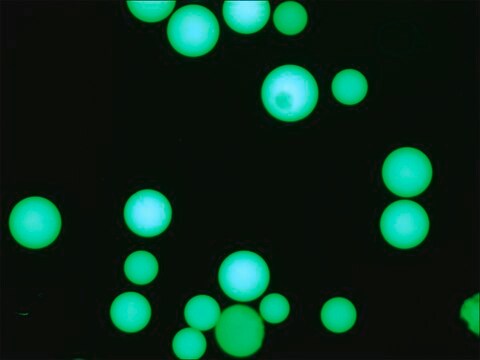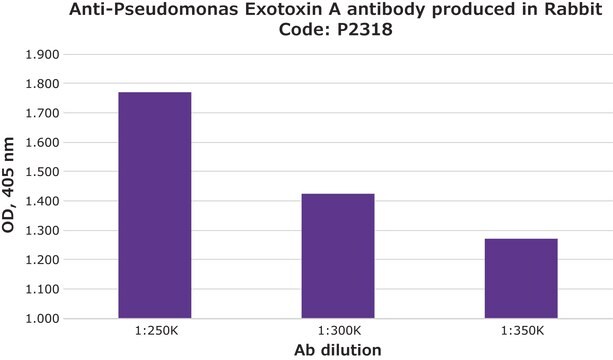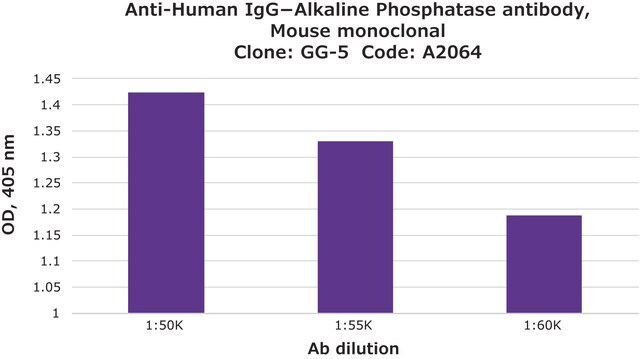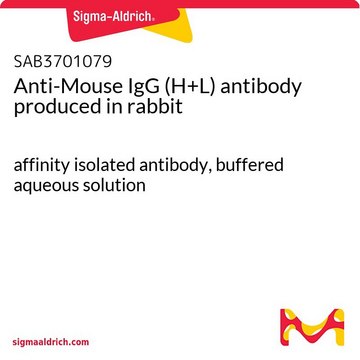Wichtige Dokumente
SAB4200790
Anti-Human IgG (Fc specific)-Peroxidase antibody, Mouse monoclonal
clone GG-7, purified from hybridoma cell culture
Synonym(e):
Anti-Human immunoglobulin G
About This Item
Empfohlene Produkte
Biologische Quelle
mouse
Qualitätsniveau
Konjugat
peroxidase conjugate
Antikörperform
purified from hybridoma cell culture
Antikörper-Produkttyp
primary antibodies
Klon
GG-7, monoclonal
Form
lyophilized powder
Speziesreaktivität
human
Methode(n)
direct ELISA: 1:40,000-1:80,000 using 2.5 μg/mL human IgG1 for coating
Isotyp
IgG1
Versandbedingung
dry ice
Lagertemp.
−20°C
Posttranslationale Modifikation Target
unmodified
Allgemeine Beschreibung
The Fc fragment has various important functions such as complement fixation, site for rheumatoid factor (autoantibody directed to Fc) attachment, passage through the placental membrane and protein A binding. A certain population of lymphocytes also possess an "Fc receptor". These functions indicate the importance of immunoreagents specific for the Fc fragment of Human IgG.
Monoclonal Anti-Human IgG (Fc specific) is specific for the Fc fragment of Human IgG and is observed with all human IgG subclasses but not with the Fab fragment of human IgG, purified light chains, human IgA or human IgM.
Immunogen
Anwendung
Physikalische Form
Sonstige Hinweise
Sie haben nicht das passende Produkt gefunden?
Probieren Sie unser Produkt-Auswahlhilfe. aus.
Signalwort
Warning
H-Sätze
Gefahreneinstufungen
Skin Sens. 1
Lagerklassenschlüssel
12 - Non Combustible Liquids
WGK
WGK 2
Flammpunkt (°F)
Not applicable
Flammpunkt (°C)
Not applicable
Hier finden Sie alle aktuellen Versionen:
Analysenzertifikate (COA)
Die passende Version wird nicht angezeigt?
Wenn Sie eine bestimmte Version benötigen, können Sie anhand der Lot- oder Chargennummer nach einem spezifischen Zertifikat suchen.
Besitzen Sie dieses Produkt bereits?
In der Dokumentenbibliothek finden Sie die Dokumentation zu den Produkten, die Sie kürzlich erworben haben.
Unser Team von Wissenschaftlern verfügt über Erfahrung in allen Forschungsbereichen einschließlich Life Science, Materialwissenschaften, chemischer Synthese, Chromatographie, Analytik und vielen mehr..
Setzen Sie sich mit dem technischen Dienst in Verbindung.









